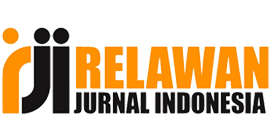Ethic and Morality: Framing Analysis on Monetary Issue and Health Capitalism on Online News
DOI:
https://doi.org/10.31539/costing.v7i4.10873Keywords:
Commercialisation Of Health; Health Issues; Journalism EthicsAbstract
Contemporary media analysis makes great study in the junction of ethics, morality, financial concerns, and health capitalism. Using Entman's Framing Analysis Model to expose the underlying stories and prejudices, this research investigates how online news sites address certain subjects. The study begins by setting the scene for the relevance of moral and ethical considerations in debates on health capitalism and financial policies, especially in the digital age where public opinion and policy debates are much influenced by online news. The study of the literature explores the body of current work on media framing, ethical standards in journalism, the presentation of financial concerns, and the dynamics of health capitalism. The study draws attention to the areas in which the literature lacks in terms of how these subjects are handled on internet news and the possible influence on public opinion and policy-making. The study examines a range of online news items from major news sources using Entman's Framing Analysis Model. The elements of the model—problem characterization, causal interpretation, moral evaluation, and treatment recommendation—offer an analytical framework to look at how these publications tackle financial concerns and health capitalism. The results show obvious trends in how these subjects are presented on online news. Emphasizing the functions of government and financial institutions, monetary problems are often considered in connection with economic stability and the efficiency of policies. Still, health capitalism is most usually understood in terms of personal responsibility and market efficiency. It centers on moral conundrums and assessments of ethical issues related to affordable healthcare. The study has several connotations. It underlines the need of reporting on financial and health issues using a more fair and ethical sound manner. This emphasizes how public opinion and policy decisions could be influenced by media frame. It underlines the need of more responsibility in journalism to guarantee that difficult problems are presented in an ethical and instructive way.
References
[2] L. D’Haenens, N. Jankowski, and A. Heuvelman, “News in online and print newspapers: Differences in reader consumption and recall,” New Media Soc, 2004, doi: 10.1177/1461444804042520.
[3] R. Rios-Rodríguez, S. Fernández-López, A. Dios-Vicente, and D. Rodeiro-Pazos, “Digital Opportunities for Local Journalism: A Panel Data Analysis on the Economic Performance of Online-Only vs. Print Newspapers,” Digital Journalism, pp. 1–20, Aug. 2022, doi: 10.1080/21670811.2022.2103009.
[4] P. Verweij, “Making convergence work in the newsroom: A case study of convergence of print, radio, television and online newsrooms at the African media matrix in South Africa during the National Arts Festival,” Convergence, vol. 15, no. 1, pp. 75–87, 2009.
[5] D. Susilo, E. Hidayat, and J. J. Dalangin, “The Declining Trend of Religious Films in Indonesia: Can They Win Again?,” ETTISAL: Journal of Communication, vol. 8, no. 2, pp. 39–54, 2023.
[6] R. Entman, “Framing: Toward clarification of a fractured paradigm,” Journal of communication, vol. 43, no. 4, pp. 51–58, 1993.
[7] R. Entman, “Cascading activation: Contesting the White House’s frame after 9/11,” Polit Commun, vol. 20, no. 4, pp. 415–432, 2003.
[8] D. Listiorini, D. Asteria, and B. Sarwono, “Moral panics on lgbt issues: evidence from indonesian tv programme,” Jurnal Studi Komunikasi, vol. 3, no. 3, p. 355, Nov. 2019, doi: 10.25139/jsk.v3i3.1882.
[9] E. Noelle-Neumann, The spiral of silence: Public opinion--Our social skin. University of Chicago Press, 1993.
[10] W. Donsbach, C. Salmon, and Y. Tsfati, The spiral of silence: New perspectives on communication and public opinion. Routledge, 2014.
[11] M. E. McCombs and D. L. Shaw, “The Agenda-Setting Function of Mass Media,” Public Opin Q, 1972, doi: 10.1086/267990.
[12] E. López-Escobar, J. P. Llamas, and M. McCombs, “Agenda setting and community consensus: First and second level effects,” Int J Public Opin Res, 1998, doi: 10.1093/ijpor/10.4.335.
[13] H. Harliantara, N. F. S. Maella, A. Junaedi, D. Abror, and L. H. Chen, “The impact of elements and advertising broadcasting intensity exposure in terrestrial radio,” Jurnal Studi Komunikasi, vol. 7, no. 1, pp. 065–084, Mar. 2023, doi: 10.25139/jsk.v7i1.6144.
[14] M. Fadhlurrohman and E. Purnomo, “The role of online mass media as a tool for the 2019 political campaign in Indonesia,” Jurnal Studi Komunikasi, vol. 4, no. 2, pp. 311–325, 2020.
[15] M. S. Yuliarti and W. Jatimurti, “Media and environment: how indonesia online news portal frames biodegradable issue?,” Jurnal Studi Komunikasi, vol. 3, no. 2, pp. 167–181, 2019.
[16] M. F. S. Ananda, A. R. Nugraha, and S. Sumartias, “Analisis framing pemberitaan korupsi massal di media online detik.com,” Jurnal Studi Komunikasi (Indonesian Journal of Communications Studies), vol. 3, no. 2, p. 253, 2019, doi: 10.25139/jsk.v3i2.1464.
[17] E. A. Suryana and M. Azis, “The potential of economic loss due to stunting in indonesia,” Jurnal Ekonomi Kesehatan Indonesia, vol. 8, no. 1, pp. 52–65, 2023.
[18] V. Adriany and M. Tesar, “Unpacking the discourses of stunting in Indonesian early childhood education and parenting,” Child Soc, vol. 37, no. 2, pp. 311–325, 2023.


